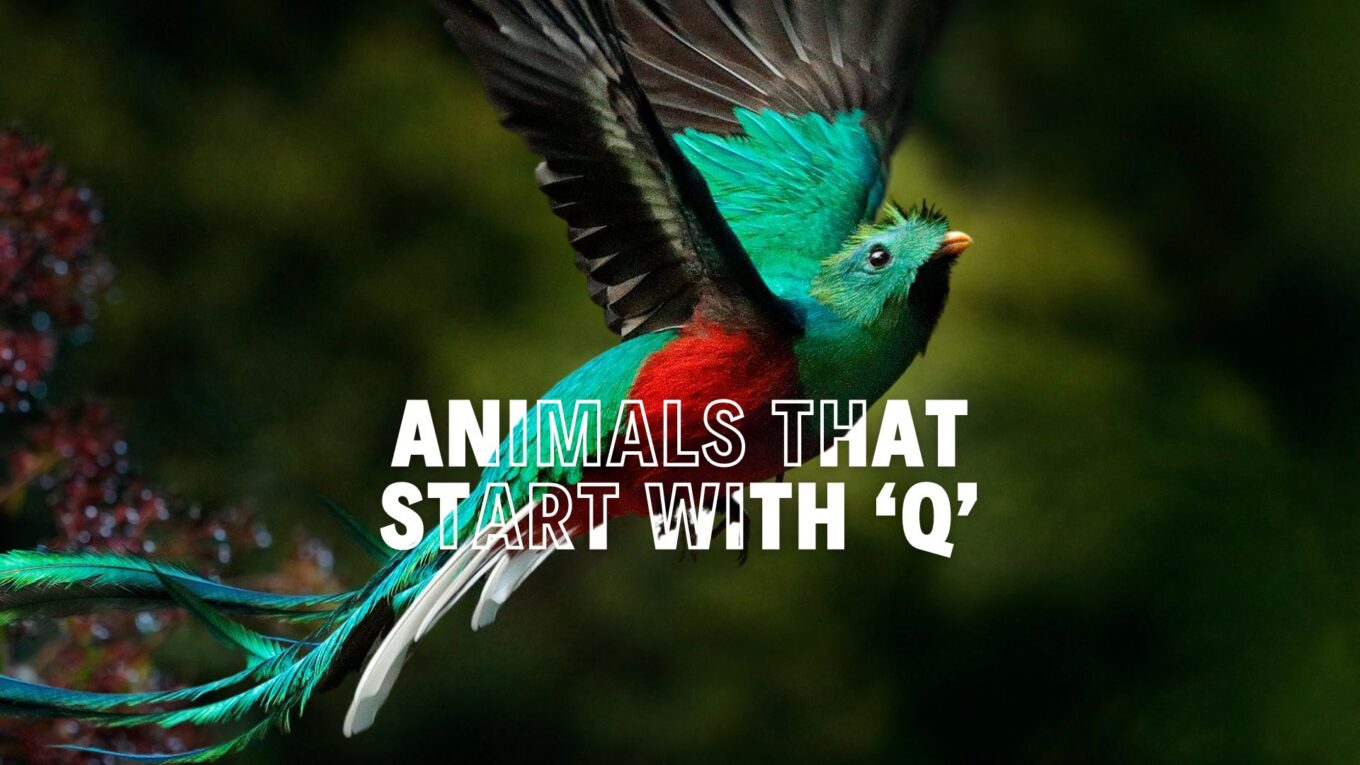Have you ever wondered about the unique creatures whose names begin with Q? From the bizarre quokka to the glorious quetzal, animals that start with Q are charming.
Imagine exploring a world where queens rule the seas and gentle giants roam ancient forests.
These Q-named animals offer a glimpse into nature’s diversity, from the ocean’s depths to the heights of tropical canopies.
This guide will introduce you to over 30 animals whose names start with Q. It will also describe their habitats, behaviors, and challenges in the wild.
Whether you’re a nature lover, student, or simply curious, you’ll find captivating stories about these often-overlooked creatures.
Ready to undertake a trip through the animal kingdom’s Q-section? Let’s jump in and reveal the wonders of these remarkable animals.
Animals that Start with Q
Get ready to meet some unique creatures whose names begin with Q. From land to sea; these animals showcase nature’s variety in unexpected ways.
1. Quagga
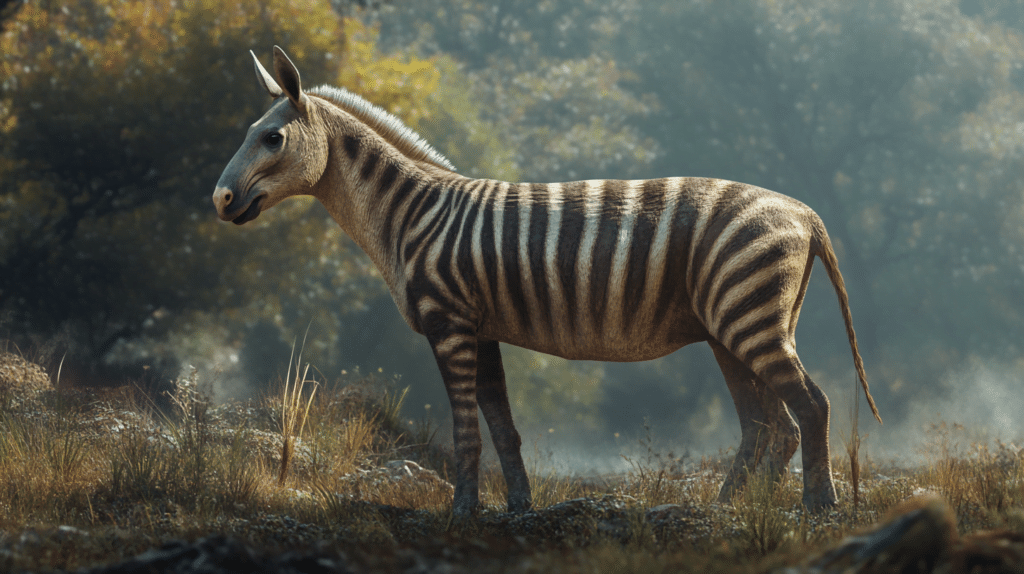
The Quagga is a subspecies of the plains zebra known for its unique pattern of stripes, which are concentrated on the front part of its body and fade toward the back.
This extinct animal stood about 4.5 to 5 feet tall at the shoulder and weighed between 500 to 700 pounds.
- Region of Habitat: South Africa
- Scientific Name: Equus quagga quagga
- Place of Origin: Africa
- Feeding Habits: Herbivore
- What Sound They Make: Neighing similar to other zebras
Fun Facts: The Quagga was hunted to extinction in the late 19th century, largely due to its unique hide.
Once mistaken for a different species, it was later recognized as a zebra subspecies. Efforts are underway to “breed back” the Quagga from the plains zebra through selective breeding programs.
2. Quahog Clam
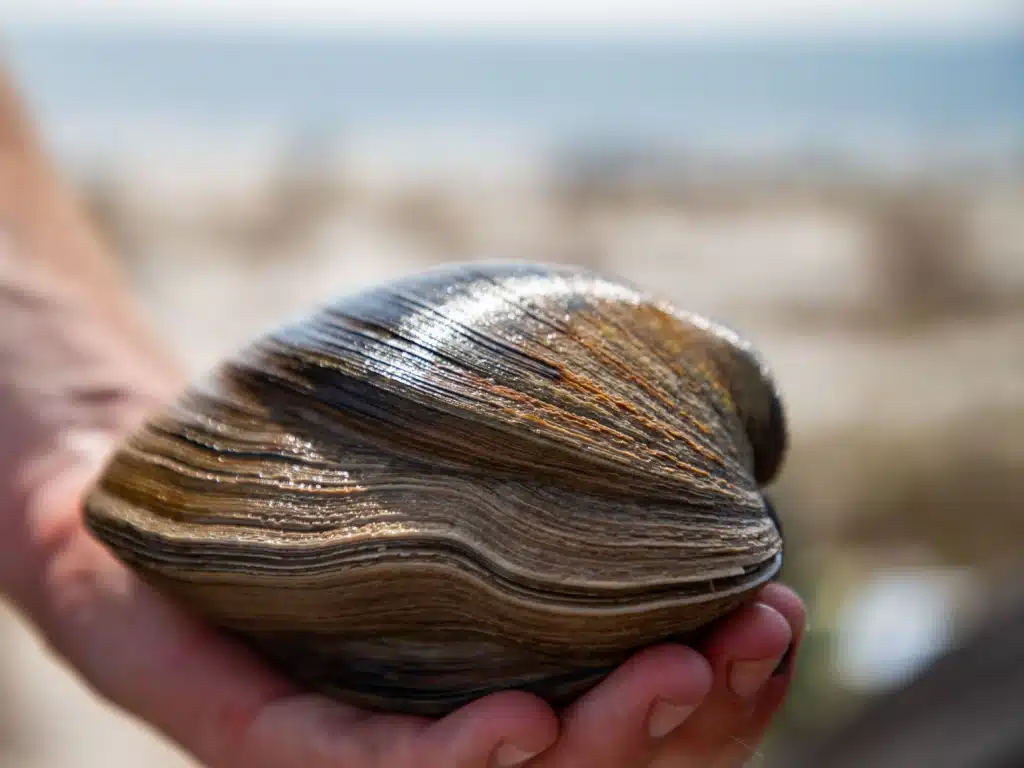
The Quahog Clam is a large, edible marine bivalve with a rounded, thick shell that can grow up to 4 inches long. Its body is protected by a hard shell that varies from white to gray.
- Region of Habitat: Atlantic Coast of North America
- Scientific Name: Mercenaria mercenaria
- Place of Origin: North America
- Feeding Habits: Filter feeder, feeding on plankton
- What Sound They Make: Silent
Fun Facts: Quahog Clams are known for their longevity, with some living over 200 years. They are often harvested for their sweet and salty meat, used in various culinary dishes, particularly clam chowder.
The shells of Quahog Clams have also been used historically as currency by Native American tribes.
3. Quail

Quails are small, plump birds with short necks and tail feathers. They typically measure about 7 to 10 inches in length and weigh between 3 to 9 ounces.
Their round body with brown, black, and white plumage provides excellent camouflage in their natural habitat.
- Region of Habitat: Woodlands, grasslands, and agricultural areas worldwide
- Scientific Name: Coturnix coturnix
- Place of Origin: Europe, Asia, and Africa
- Feeding Habits: Omnivore, feeding on seeds, insects, and small invertebrates
- What Sound They Make: High-pitched, rhythmic calls
Fun Facts: Quails are known for their distinctive “bobwhite” call and are often kept in captivity for their eggs and meat.
These birds have a fast, direct flight but prefer walking or running away from danger. Some species of quail are migratory, traveling long distances between breeding and wintering grounds.
4. Quaker Parrot
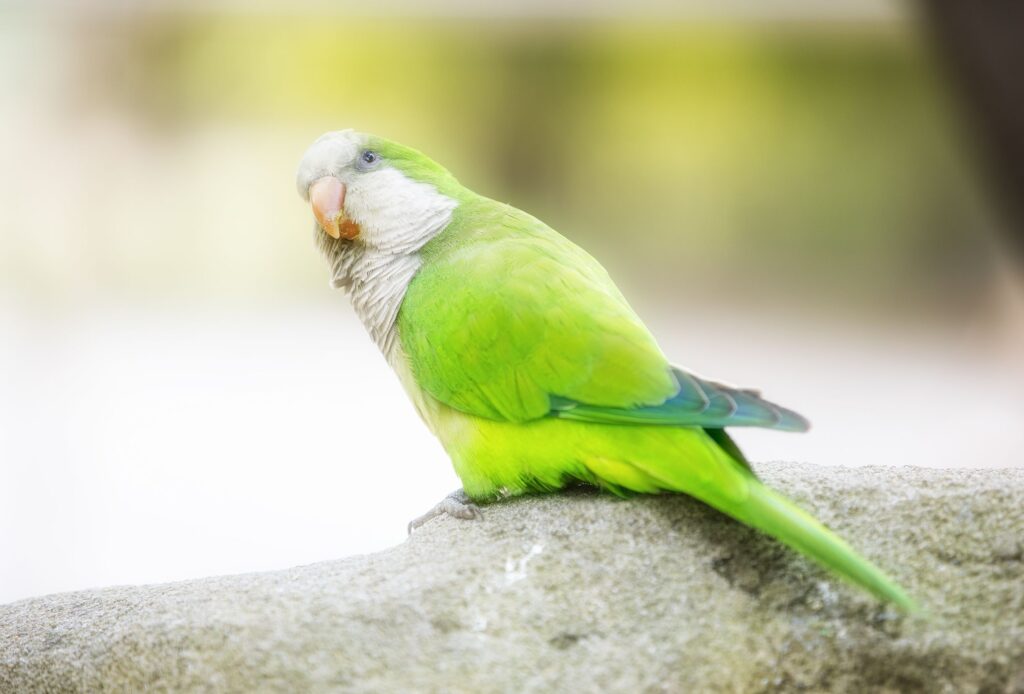
The Quaker Parrot, also known as the Monk Parakeet, is a small to medium-sized parrot with a bright green body and a grayish-white face and chest.
These birds typically measure about 11 to 12 inches in length and weigh around 3 to 5 ounces.
- Region of Habitat: South America
- Scientific Name: Myiopsitta monachus
- Place of Origin: South America
- Feeding Habits: Herbivore, feeding on seeds, fruits, and vegetables
- What Sound They Make: Loud, chattering calls
Fun Facts: Quaker Parrots are one of the few parrot species that build nests, and they are known to construct large communal nests out of sticks.
These highly social birds are popular as pets due to their playful nature and ability to mimic human speech.
In the wild, they live in large flocks and can sometimes become pests in agricultural areas.
5. Queen Alexandra’s Birdwing Butterfly

The Queen Alexandra’s Birdwing is the largest butterfly in the world, with females having a wingspan of up to 11 inches.
These butterflies are vividly colored. Males display bright green and blue wings, while females are brown with cream-colored spots.
- Region of Habitat: Rainforests of Papua New Guinea
- Scientific Name: Ornithoptera alexandrae
- Place of Origin: Papua New Guinea
- Feeding Habits: Herbivore, feeding on nectar from flowers
- What Sound They Make: Silent
Fun Facts: This butterfly is named after Queen Alexandra of the United Kingdom. Due to its rarity and beauty, collectors highly seek it out, which has led to its status as an endangered species.
Queen Alexandra’s Birdwing is also protected under CITES, making it illegal to trade it internationally without proper permits.
6. Queen Angelfish
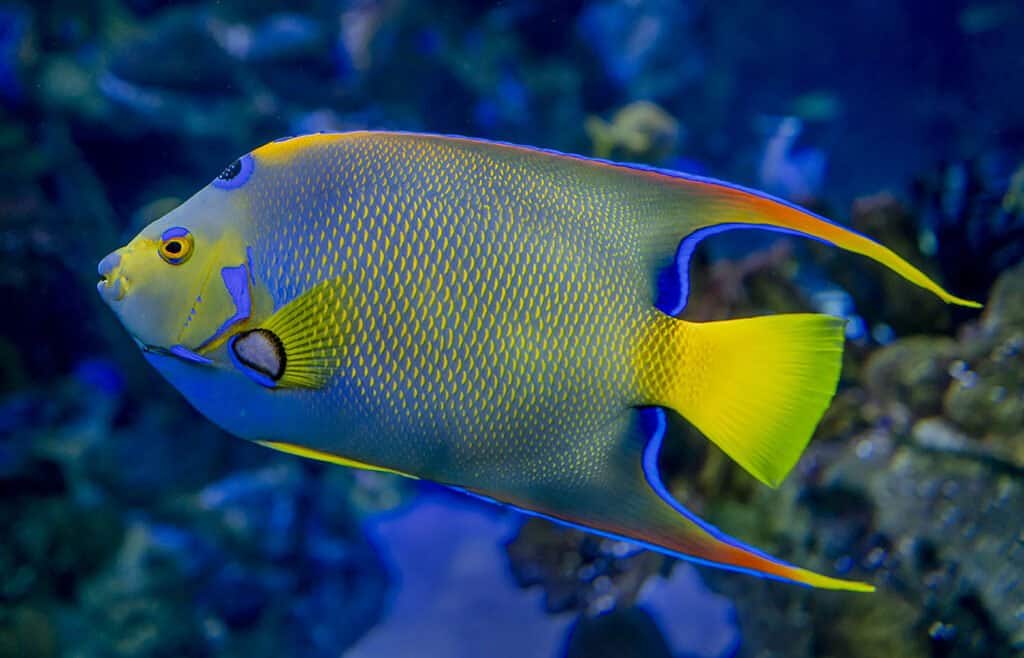
The Queen Angelfish is a brightly colored marine fish with a blue and yellow body. It measures about 8 to 14 inches and weighs up to 3 pounds.
Its forehead has a distinctive “crown” of blue spots that resembles a crown, hence its name.
- Region of Habitat: Western Atlantic Ocean
- Scientific Name: Holacanthus ciliaris
- Place of Origin: Western Atlantic, including the Caribbean Sea
- Feeding Habits: Omnivore, feeding on sponges, algae, and small invertebrates
- What Sound They Make: Silent
Fun Facts: Queen Angelfish are known for their striking appearance and are popular in the aquarium trade.
They are often found swimming alone or in pairs around coral reefs. Juveniles clean parasites off larger fish, which plays an important role in the reef ecosystem. Despite their beauty, they can be territorial and aggressive towards other fish.
7. Queen Conch
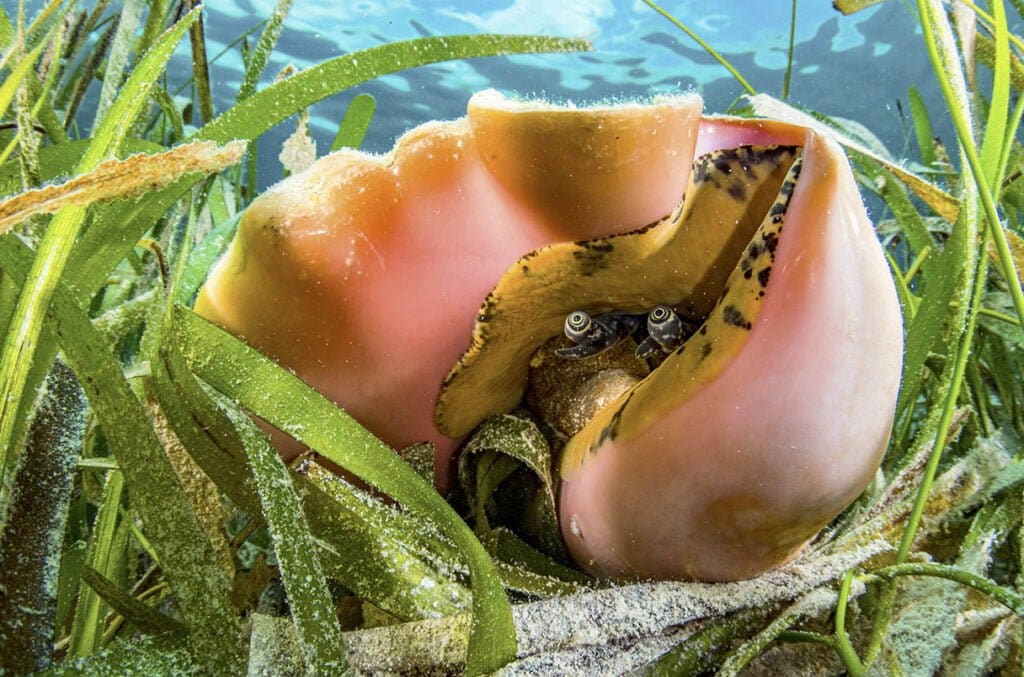
The Queen Conch is a large sea snail with a distinctive spiral-shaped shell that can grow up to 12 inches long.
Its shell is usually pink, orange, or yellow on the inside, and it houses a soft-bodied mollusk with two long, slender tentacles.
- Region of Habitat: Caribbean Sea
- Scientific Name: Lobatus gigas
- Place of Origin: Caribbean
- Feeding Habits: Herbivore, feeding on algae and seagrasses
- What Sound They Make: Silent
Fun Facts: Queen Conchs are highly valued for their meat, which is a delicacy in many Caribbean cuisines, and their beautiful shells, which are often used as decorative items.
Overfishing has led to a decline in their population, and they are now protected in many areas.
Conch shells have been used historically as musical instruments and tools by indigenous peoples.
8. Queen Parrotfish

The Queen Parrotfish is a colorful reef fish that can grow up to 24 inches long and weigh around 4 pounds.
Its mighty body is vibrantly hued blue, green, and pink, and its beak-like mouth scrapes algae off coral.
- Region of Habitat: Western Atlantic Ocean
- Scientific Name: Scarus vetula
- Place of Origin: Western Atlantic, including the Caribbean Sea
- Feeding Habits: Herbivore, feeding primarily on algae
- What Sound They Make: Silent
Fun Facts: Queen Parrotfish have a unique behavior of creating a mucus cocoon at night, which helps protect them from predators by masking their scent.
This species plays a crucial role in the health of coral reefs by controlling algae growth. The bright colors of the Queen Parrotfish make it a favorite among divers and underwater photographers.
9. Queen Snake
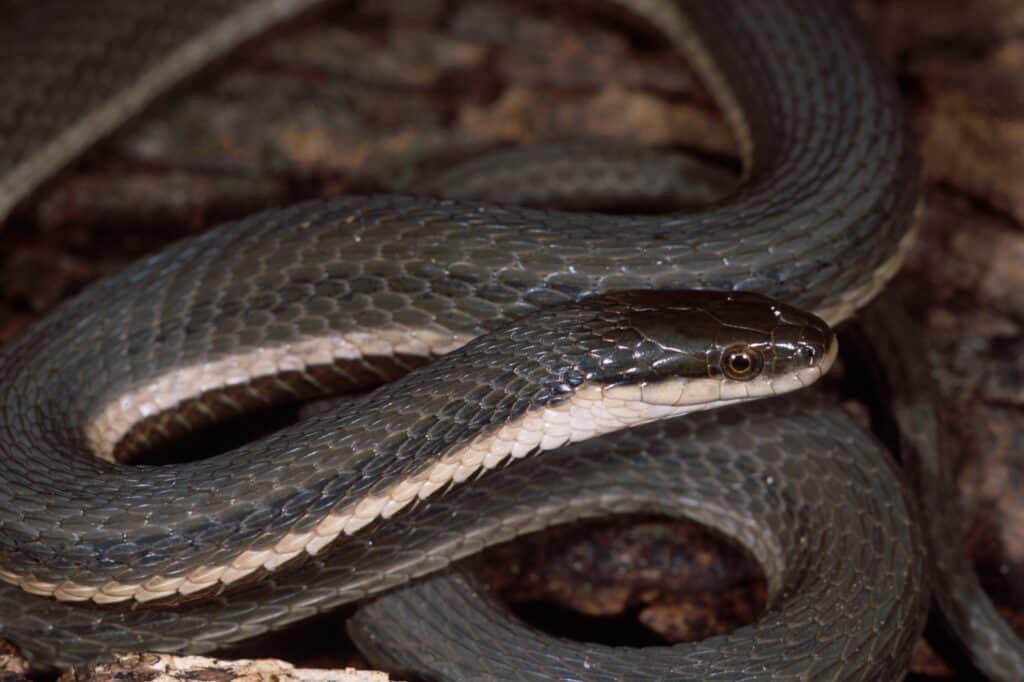
The Queen Snake is a slender, nonvenomous snake typically measures 15 to 24 inches long.
It has a brown or olive-colored body with a pale yellow or cream underside, often featuring dark stripes.
- Region of Habitat: Eastern United States and Southern Ontario, Canada
- Scientific Name: Regina septemvittata
- Place of Origin: North America
- Feeding Habits: Carnivore, feeding primarily on crayfish
- What Sound They Make: Hissing
Fun Facts: The Queen Snake is highly specialized in its diet, primarily consuming freshly molted crayfish.
These snakes are excellent swimmers and are often found near streams and rivers. They are important for maintaining the balance of crayfish populations in their habitat.
Despite their name, Queen Snakes are not aggressive and are harmless to humans.
10. Queen Snapper
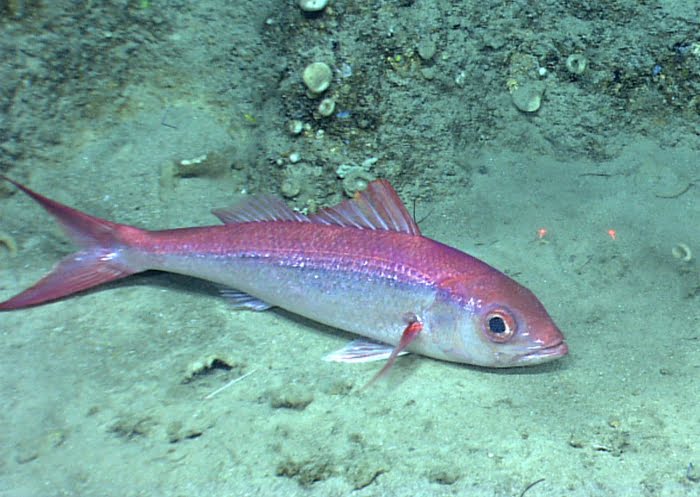
The Queen Snapper is a deep-water fish that can grow up to 3 feet long and weigh around 8 to 10 pounds.
It has a bright red body with large, round eyes adapted to see in the low light of deep waters.
- Region of Habitat: Western Atlantic Ocean
- Scientific Name: Etelis oculatus
- Place of Origin: Western Atlantic, including the Caribbean Sea
- Feeding Habits: Carnivore, feeding on smaller fish and invertebrates
- What Sound They Make: Silent
Fun Facts: Queen Snappers are prized by commercial and recreational fishers for their tasty flesh.
They are typically found at depths 200 to 500 feet and live in schools near the seafloor.
Due to their deep-water habitat, they are less commonly seen than other snapper species but are highly sought after for their firm, white meat.
11. Queen Triggerfish
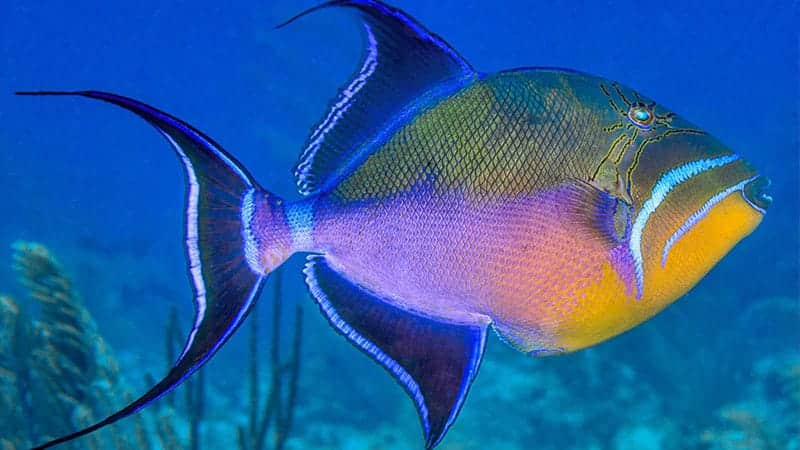
The Queen Triggerfish is a vibrant reef fish with a distinctive oval-shaped body and a palette of bright colors, including blue, green, yellow, and purple. It can grow up to 24 inches and weigh about 10 pounds.
- Region of Habitat: Western Atlantic Ocean
- Scientific Name: Balistes vetula
- Place of Origin: Western Atlantic, including the Caribbean Sea
- Feeding Habits: Omnivore, feeding on sea urchins, mollusks, and algae
- What Sound They Make: Grunting sounds, especially when threatened
Fun Facts: The Queen Triggerfish has strong jaws that can easily crush hard-shelled prey, such as sea urchins and clams.
This species is known for its territorial behavior and can be aggressive towards divers and other fish.
Its bright colors and unique shape make it a popular subject in underwater photography, but its defensive nature means it should be approached with caution.
12. Queen Whiptail
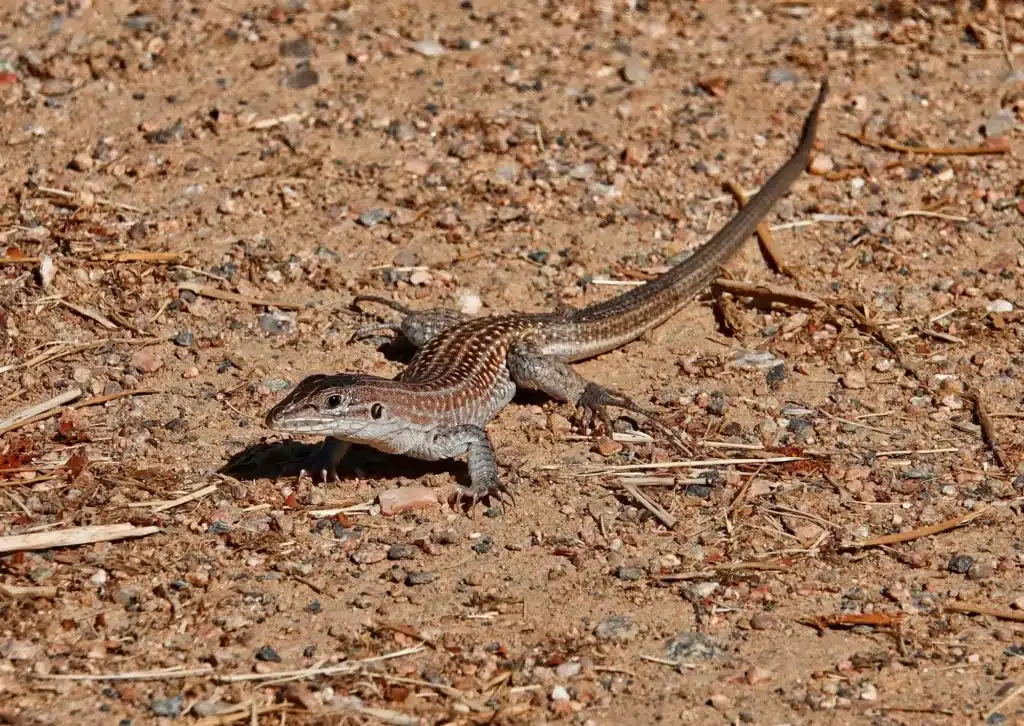
The Queen Whiptail is a slender lizard with a long, tapering tail that often exceeds the length of its body.
These lizards can grow up to 8 inches in total length, with their tails accounting for more than half of that.
- Region of Habitat: Caribbean Islands
- Scientific Name: Cnemidophorus lemniscatus
- Place of Origin: Caribbean
- Feeding Habits: Insectivore, feeding on small insects and spiders
- What Sound They Make: Silent
Fun Facts: Queen Whiptails are known for their speed and agility, making them difficult to catch. They are often seen darting across rocks and sand in search of prey.
These lizards are also unique because some populations consist entirely of females, reproducing through parthenogenesis, where eggs develop without fertilization.
13. Queensland Grouper
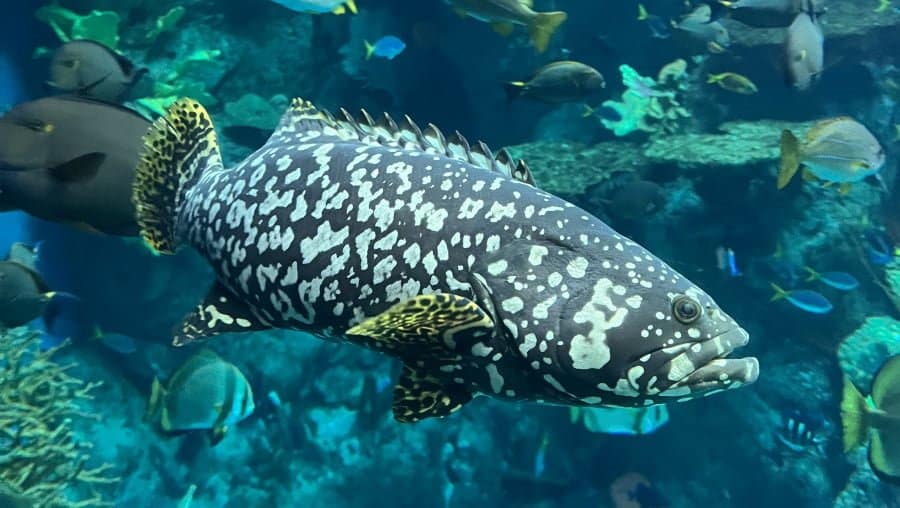
The Queensland Grouper is one of the largest bony fish in the world. It can grow up to 8 feet in length and weigh over 800 pounds.
It has a strong, muscular body with mottled brown and gray skin.
- Region of Habitat: Indo-Pacific region
- Scientific Name: Epinephelus lanceolatus
- Place of Origin: Indo-Pacific
- Feeding Habits: Carnivore, feeding on fish, crustaceans, and occasionally small sharks
- What Sound They Make: Silent
Fun Facts: The Queensland Grouper, also known as the Giant Grouper, is a solitary predator that often ambushes its prey.
It is a long-lived species, with some individuals reaching over 50 years of age. Due to overfishing, the Queensland Grouper is now protected in many regions and plays a crucial role in maintaining the balance of reef ecosystems.
14. Queensland Lungfish
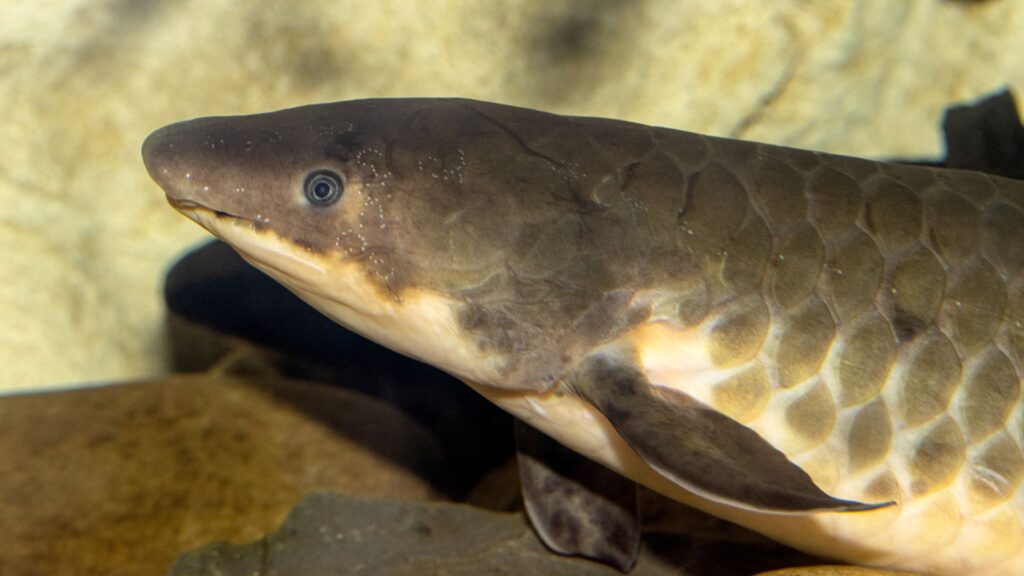
The Queensland Lungfish is a primitive fish with a stout body. It measures about 3 to 5 feet long and can weigh up to 40 pounds.
Its body is smooth and scale-covered, and its coloration is brown or olive-green.
- Region of Habitat: Freshwater rivers and streams in Queensland, Australia
- Scientific Name: Neoceratodus forsteri
- Place of Origin: Australia
- Feeding Habits: Omnivore, feeding on aquatic plants, insects, and small fish
- What Sound They Make: Silent
Fun Facts: The Queensland Lungfish is often called a “living fossil” because it has remained virtually unchanged for over 100 million years.
It can breathe air using a single lung, an adaptation that allows it to survive in oxygen-poor waters.
The lungfish is an important species for understanding the evolutionary transition from fish to land-dwelling vertebrates.
15. Quailfinch
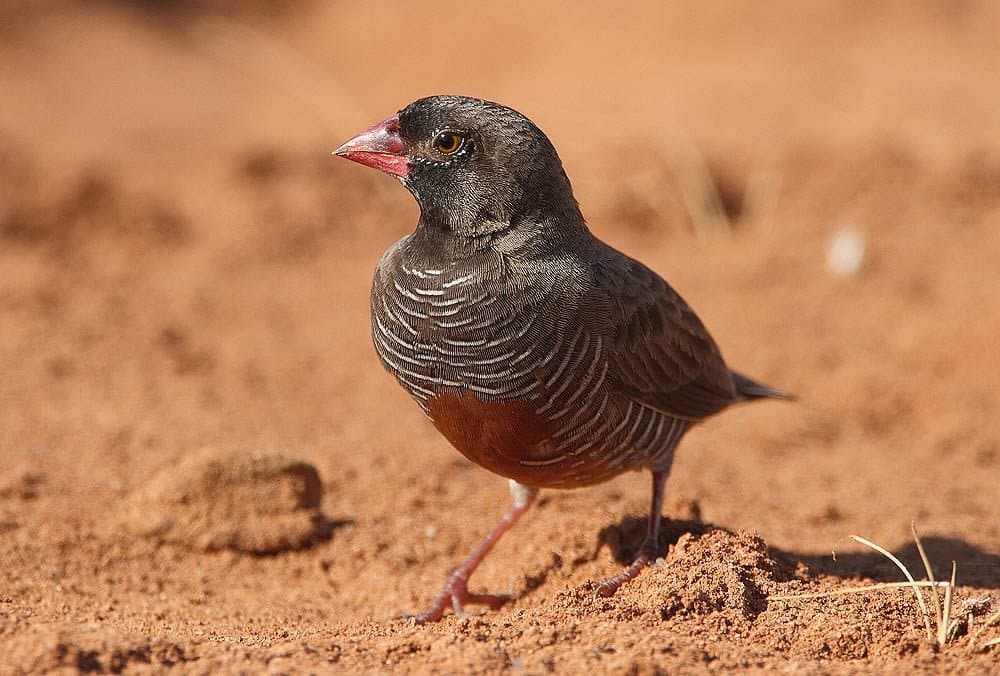
The Quailfinch is a small bird resembling a quail. Its body length is about 4 to 5 inches, and its weight is around 0.5 to 0.7 ounces.
It has brown and white speckled plumage with a short, conical beak, which is well-adapted for seed-eating.
- Region of Habitat: Sub-Saharan Africa
- Scientific Name: Ortygospiza atricollis
- Place of Origin: Africa
- Feeding Habits: Herbivore, feeding on seeds and small insects
- What Sound They Make: Soft, repetitive chirps and trills
Fun Facts: Quailfinches are ground-dwelling birds often found in flocks, foraging for seeds in grasslands and savannas.
Despite their name, they are more closely related to finches than quails. These birds are also popular in the pet trade due to their small size and social nature, often kept in aviaries.
16. Quetzal
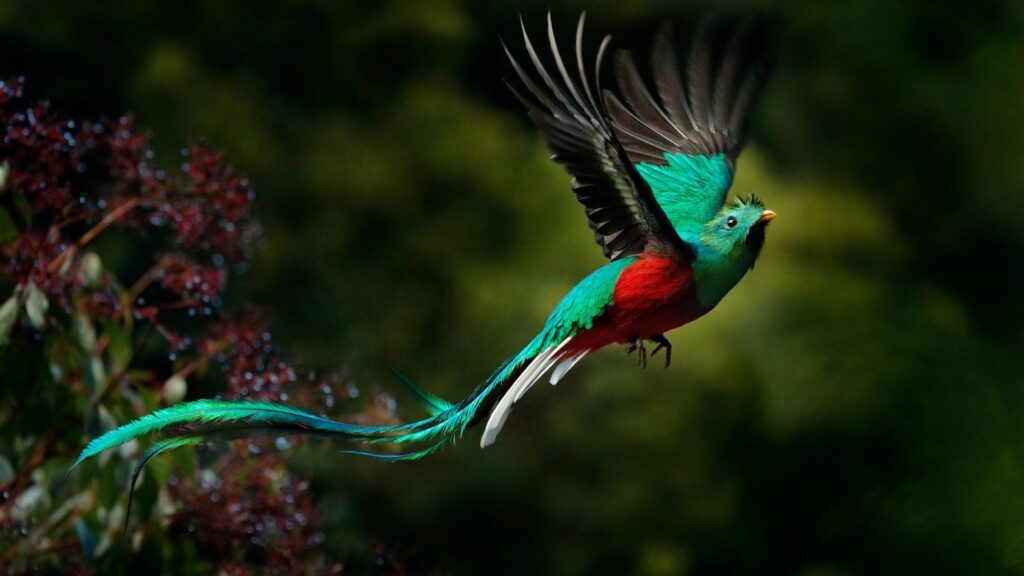
The Quetzal is a vibrantly colored bird, often considered one of the most beautiful in the world.
It measures about 14 to 16 inches in length, and males sport long tail feathers that can extend an additional 24 inches.
- Region of Habitat: Cloud forests of Central America
- Scientific Name: Pharomachrus mocinno
- Place of Origin: Central America
- Feeding Habits: Omnivore, feeding on fruits, insects, and small animals
- What Sound They Make: Melodic whistles and calls
Fun Facts: The Quetzal is the national bird of Guatemala and is deeply revered in Mesoamerican cultures.
Its vibrant green and red plumage was highly prized by ancient civilizations, who used the feathers in ceremonial garments.
The Quetzal is also known for its elusive nature, making sightings a rare and treasured experience for birdwatchers.
17. Quetzalcoatlus

Quetzalcoatlus was one of the largest flying animals ever, with a wingspan that could reach up to 36 feet.
This extinct pterosaur had a long, stiff neck and a large, toothless beak, which it likely used to scavenge or catch small prey.
- Region of Habitat: Late Cretaceous North America
- Scientific Name: Quetzalcoatlus northropi
- Place of Origin: North America
- Feeding Habits: Carnivore, likely feeding on small vertebrates and carrion
- What Sound They Make: Silent (extinct)
Fun Facts: Quetzalcoatlus is named after the Aztec god Quetzalcoatl due to its impressive size and winged appearance.
It is one of the largest known flying animals, and its revelation has provided valuable insights into the biology and behavior of pterosaurs.
Despite its size, Quetzalcoatlus was likely a graceful flyer, capable of soaring long distances in search of food.
18. Quillback
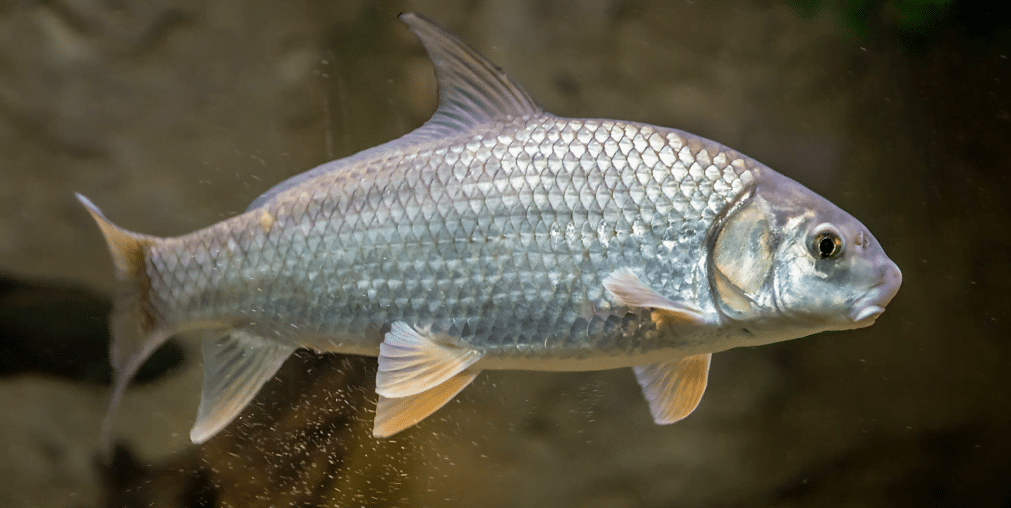
The Quillback is a freshwater fish with a deep, laterally compressed body and a prominent, quill-like dorsal fin. It typically measures around 15 to 25 inches in length and weighs up to 5 pounds.
- Region of Habitat: North American rivers and lakes
- Scientific Name: Carpiodes cyprinus
- Place of Origin: North America
- Feeding Habits: Omnivore, feeding on detritus, algae, and small invertebrates
- What Sound They Make: Silent
Fun Facts: Quillback fish are often mistaken for carp due to their similar appearance, but they belong to a different family.
They are known for their distinctive dorsal fin, which gives them their name.
Quillbacks are primarily bottom feeders and play an important role in their ecosystems by recycling nutrients from the substrate.
19. Quillback Rockfish
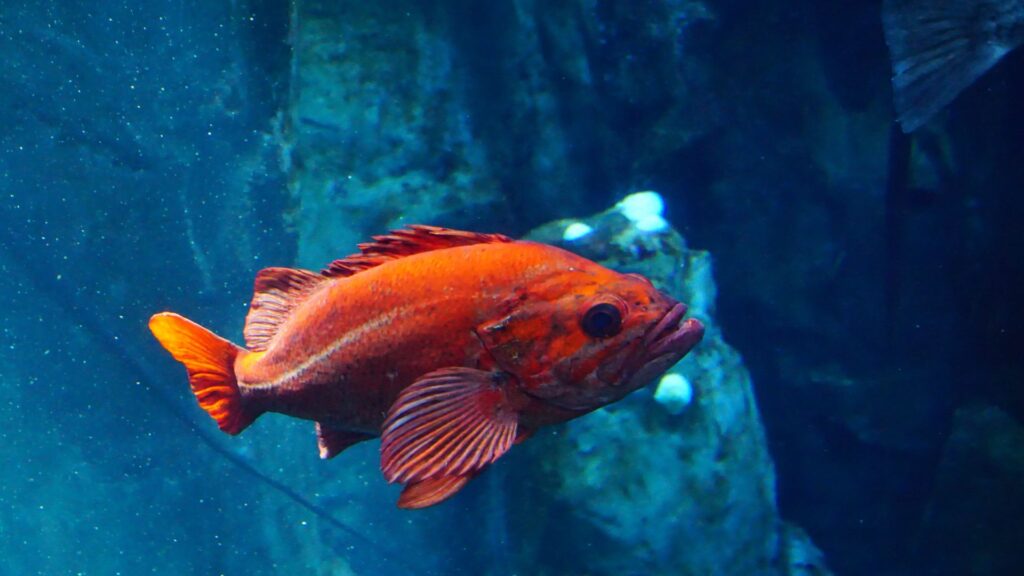
The Quillback Rockfish is a marine fish with a hard body and spiny fins. It can grow up to 24 inches and weigh around 5 to 6 pounds.
Its body is typically mottled brown or orange, providing excellent camouflage among the rocks.
- Region of Habitat: North Pacific Ocean
- Scientific Name: Sebastes maliger
- Place of Origin: North Pacific
- Feeding Habits: Carnivore, feeding on smaller fish and invertebrates
- What Sound They Make: Silent
Fun Facts: The Quillback Rockfish is a long-lived species, with some individuals reaching over 90 years of age.
They are important predators in their ecosystems, helping to control populations of smaller fish and invertebrates.
Due to their slow growth and late maturity, Quillback Rockfish are vulnerable to overfishing, and conservation efforts are in place to protect them.
20. Quokka
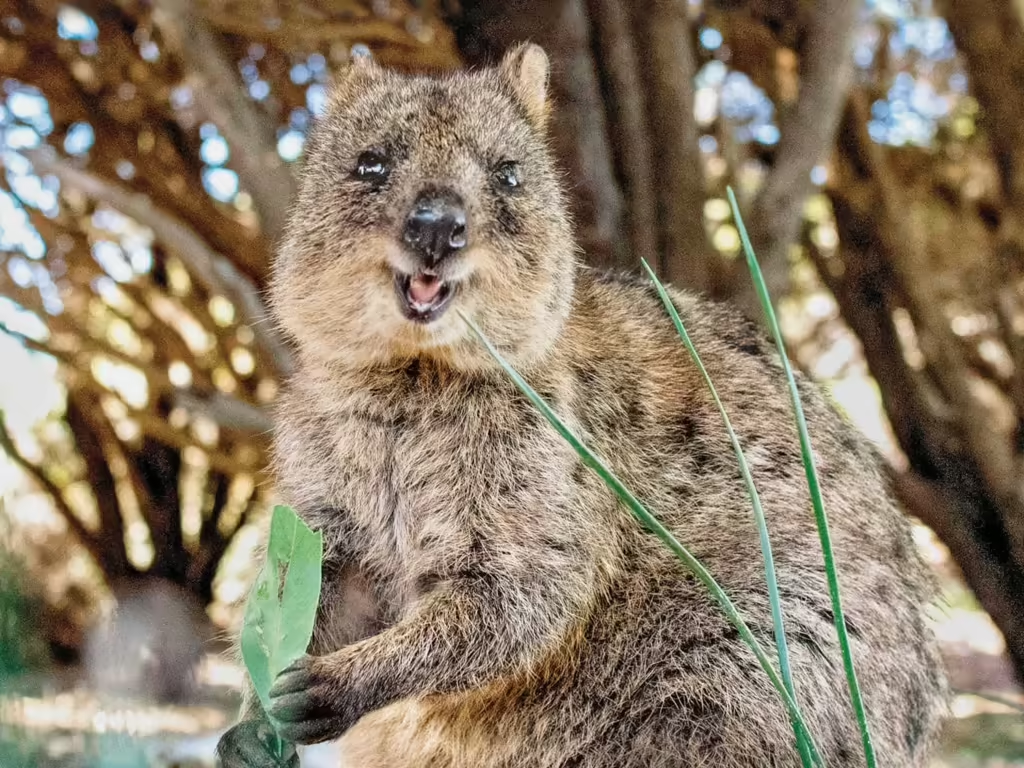
The Quokka is a small marsupial with a compact, round body covered in coarse fur. It stands about 1.5 to 2 feet tall and weighs between 5 to 10 pounds.
Quokkas have small ears, a short tail, and a characteristic smile that has made them famous.
- Region of Habitat: Southwestern Australia and nearby islands
- Scientific Name: Setonix brachyurus
- Place of Origin: Australia
- Feeding Habits: Herbivore, feeding on grasses, leaves, and bark
- What Sound They Make: Quiet grunts and hisses
Fun Facts: Quokkas are often called “the happiest animals on Earth” due to their friendly appearance and seemingly smiling faces.
They are nocturnal and can rest in the shade during the day. Quokkas are also known for surviving in harsh conditions with limited water, obtaining most of their moisture from their food.
21. Quoll
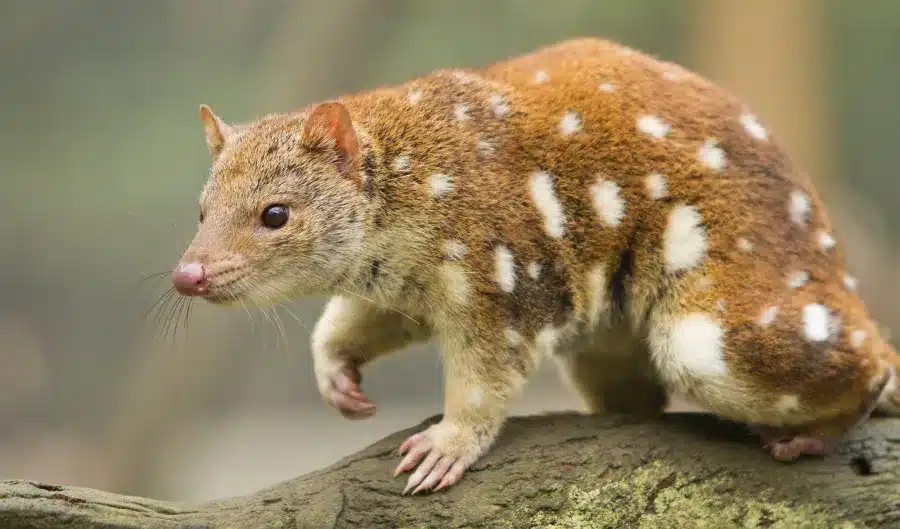
Quolls are small to medium-sized carnivorous marsupials. Depending on the species, their body length ranges from 9 to 29 inches, and they weigh between 2 and 15 pounds.
They have sharp teeth, a pointed snout, and a brown or black coat with white spots.
- Region of Habitat: Australia, New Guinea, and Tasmania
- Scientific Name: Dasyurus species
- Place of Origin: Australia and New Guinea
- Feeding Habits: Carnivore, feeding on small mammals, birds, insects, and carrion
- What Sound They Make: Growls, hisses, and screeches
Fun Facts: Quolls are solitary animals known for their aggressive hunting behavior. They are nocturnal and have a keen sense of smell and sight, which they use to track their prey.
Unfortunately, Quolls are threatened by habitat loss and introduced species, such as cats and foxes, which compete with them for food and prey on them.
22. Quoya (Genus)
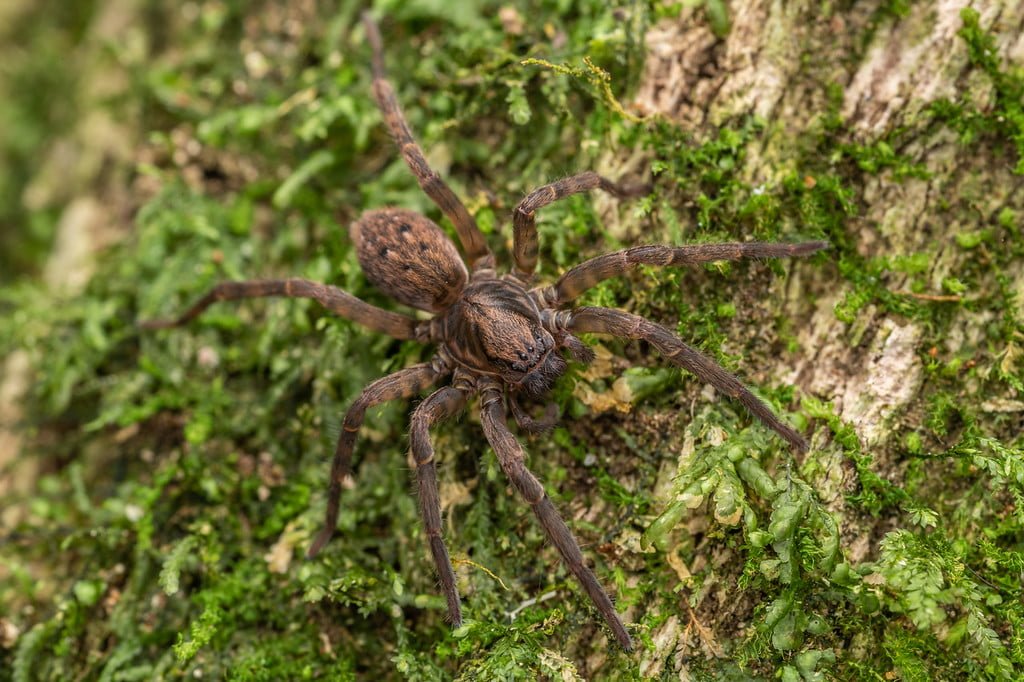
Quoya is a genus of spiders found in Australia. Various species display different sizes and colors.
These spiders typically have a body length of about 0.2 to 0.6 inches and long legs that are often banded or patterned.
- Region of Habitat: Australia
- Scientific Name: Quoya species
- Place of Origin: Australia
- Feeding Habits: Carnivore, feeding on insects and other small arthropods
- What Sound They Make: Silent
Fun Facts: Quoya spiders are named after the plant genus Quoya, found in the same regions.
Due to their varied appearances, they are often mistaken for other spider species. Like many spiders, they are crucial in controlling insect populations in their ecosystems.
Some species build webs, while others are active hunters that do not use webs to catch prey.
23. Qinling Panda

The Qinling Panda is a subspecies of the giant panda, distinguished by its unique brown and white fur.
It is similar to the giant panda, standing about 2 to 3 feet tall at the shoulder and weighing between 200 to 300 pounds.
- Region of Habitat: Qinling Mountains, China
- Scientific Name: Ailuropoda melanoleuca qinlingensis
- Place of Origin: China
- Feeding Habits: Herbivore, feeding mainly on bamboo
- What Sound They Make: Bleats, honks, and growls
Fun Facts: The Qinling Panda is one of the rarest panda subspecies, with only a small population in the Qinling Mountains.
Its brown and white coloration is thought to be due to genetic variation, and it was only recognized as a distinct subspecies in the 1980s.
Like other pandas, the Qinling Panda is an endangered species, threatened by habitat loss and low reproductive rates.
24. Quagga Mussel
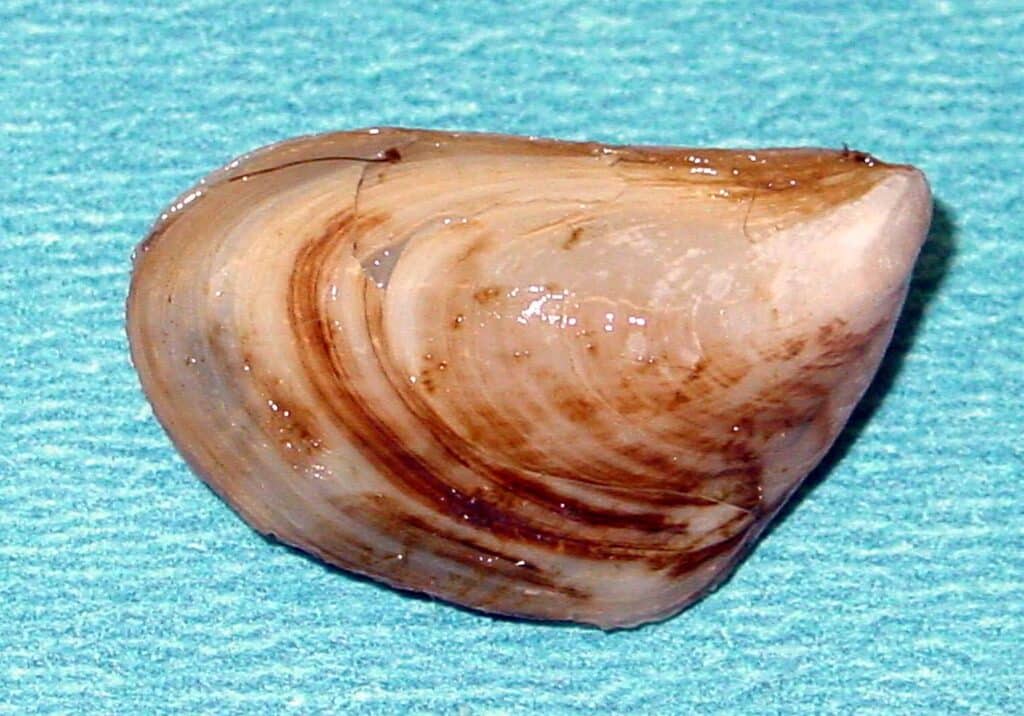
The Quagga Mussel is a small freshwater mussel measuring about 1 to 2 inches long. Its rounded, triangular shell is usually striped in dark and light colors.
- Region of Habitat: Freshwater lakes and rivers in Europe and North America
- Scientific Name: Dreissena bugensis
- Place of Origin: Eastern Europe
- Feeding Habits: Filter feeder, feeding on plankton and other small particles
- What Sound They Make: Silent
Fun Facts: The Quagga Mussel is an invasive species that has caused significant ecological and economic damage in its colonized regions, particularly in the Great Lakes of North America.
It reproduces rapidly and can outcompete native species for food and habitat. Its ability to attach to surfaces in large numbers has also led to clogged water intake pipes and other infrastructure issues.
25. Quagga Zebra
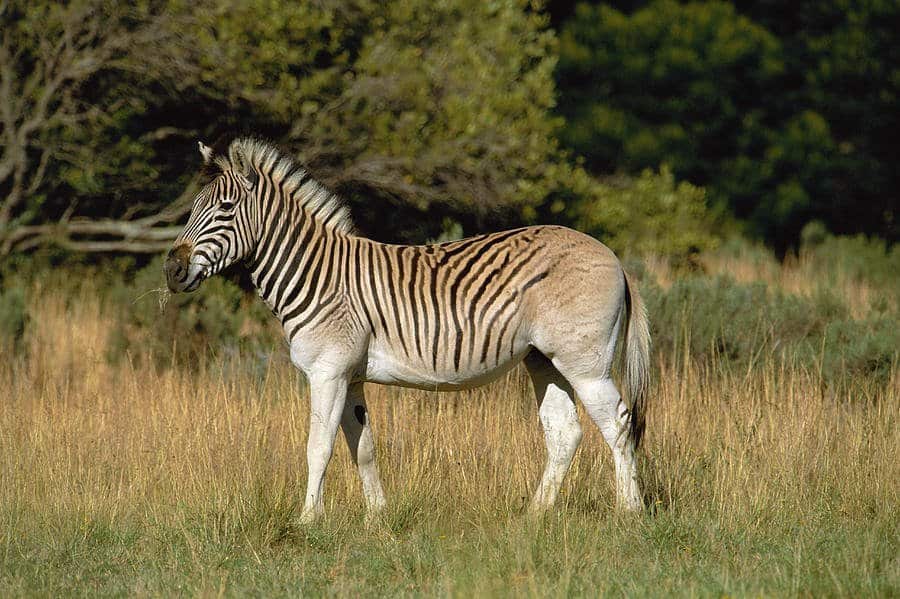
The Quagga Zebra, often called Quagga, was a plains zebra subspecies with a unique stripe pattern that faded towards its hindquarters.
It stood about 4.5 to 5 feet tall at the shoulder and weighed between 500 to 700 pounds.
- Region of Habitat: South Africa
- Scientific Name: Equus quagga quagga
- Place of Origin: Africa
- Feeding Habits: Herbivore, feeding on grasses
- What Sound They Make: Neighing similar to other zebras
Fun Facts: The Quagga became extinct in the late 19th century due to overhunting for its hide and competition with livestock.
Efforts are underway to “resurrect” the Quagga through selective breeding programs using plains zebras.
These projects aim to recreate the Quagga’s distinctive appearance, though the resulting animals are not genetically identical to the original subspecies.
26. Quaker Shrimp
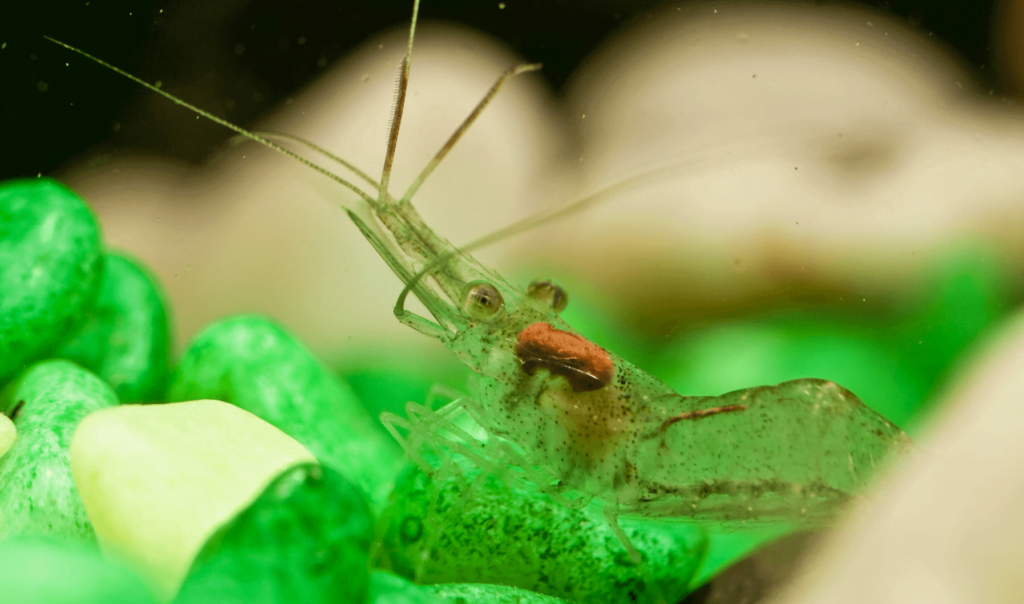
The Quaker Shrimp is a small, transparent freshwater shrimp that typically measures about 1 to 2 inches long. It has a slender body and long antennae, which it uses to sense its environment.
- Region of Habitat: Freshwater habitats in North America
- Scientific Name: Palaemonetes paludosus
- Place of Origin: North America
- Feeding Habits: Omnivore, feeding on detritus, algae, and small invertebrates
- What Sound They Make: Silent
Fun Facts: Quaker Shrimp are popular in the aquarium trade due to their small size and ability to help keep tanks clean by scavenging for food.
They are also known as ghost shrimp because their translucent bodies make them difficult to see in the water.
In the wild, they play an important role in the ecosystem by breaking down organic matter.
27. Queen Butterfly
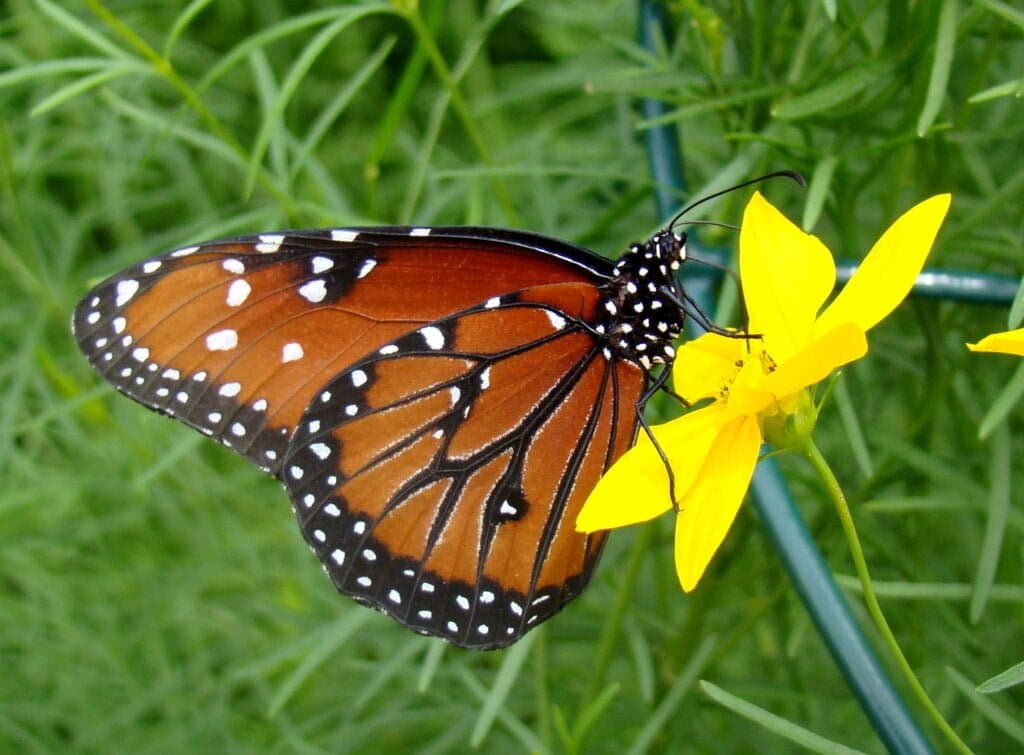
The Queen butterfly closely resembles the monarch butterfly. It has a wingspan of about 3 to 4 inches and reddish-brown wings adorned with white spots and black borders.
- Region of Habitat: Americas, particularly in the southern United States, Mexico, and Central America
- Scientific Name: Danaus gilippus
- Place of Origin: Americas
- Feeding Habits: Herbivore, feeding on nectar from flowers and milkweed plants
- What Sound They Make: Silent
Fun Facts: The Queen Butterfly is part of the subfamily Danainae, which includes other toxic butterflies like the monarch.
It obtains toxins from milkweed plants, which make it unpalatable to predators. The Queen Butterfly has a symbiotic relationship with these plants, serving as a food source and a defense mechanism.
28. Queen Anthias
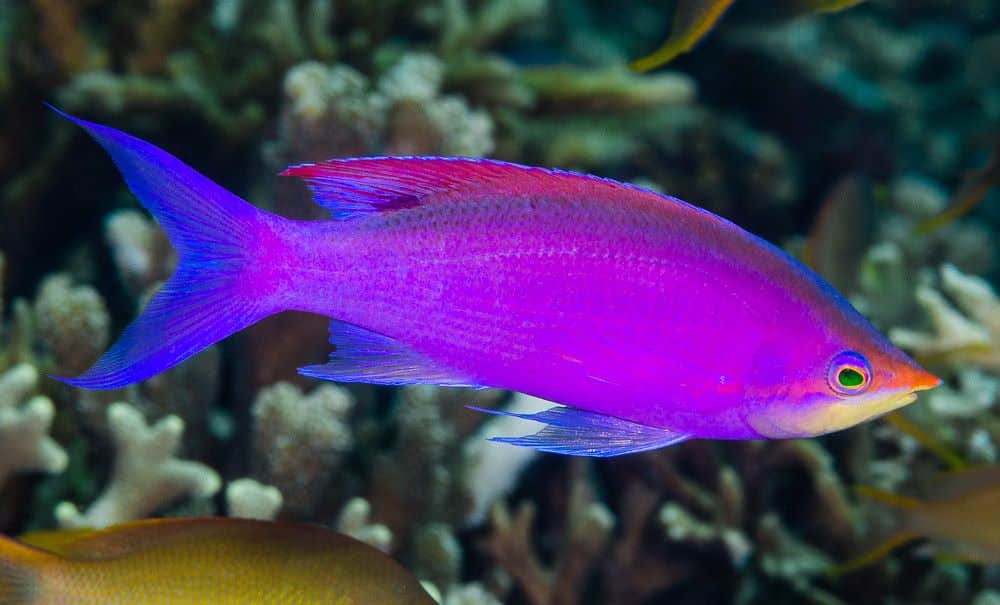
The Queen Anthias is a small, colorful reef fish growing up to 4 inches long. It has a slender body with bright pink, orange, and yellow colors, making it a favorite among marine aquarists.
- Region of Habitat: Indo-Pacific region
- Scientific Name: Pseudanthias tuka
- Place of Origin: Indo-Pacific
- Feeding Habits: Carnivore, feeding on zooplankton
- What Sound They Make: Silent
Fun Facts: Queen Anthias are often found in large schools around coral reefs, where they swim in the open water and feed on plankton.
These fish are protogynous hermaphrodites, meaning they can change sex from female to male as they mature.
This adaptation helps ensure the survival of their species in environments where mates may be scarce.
29. Queen Hawkfish
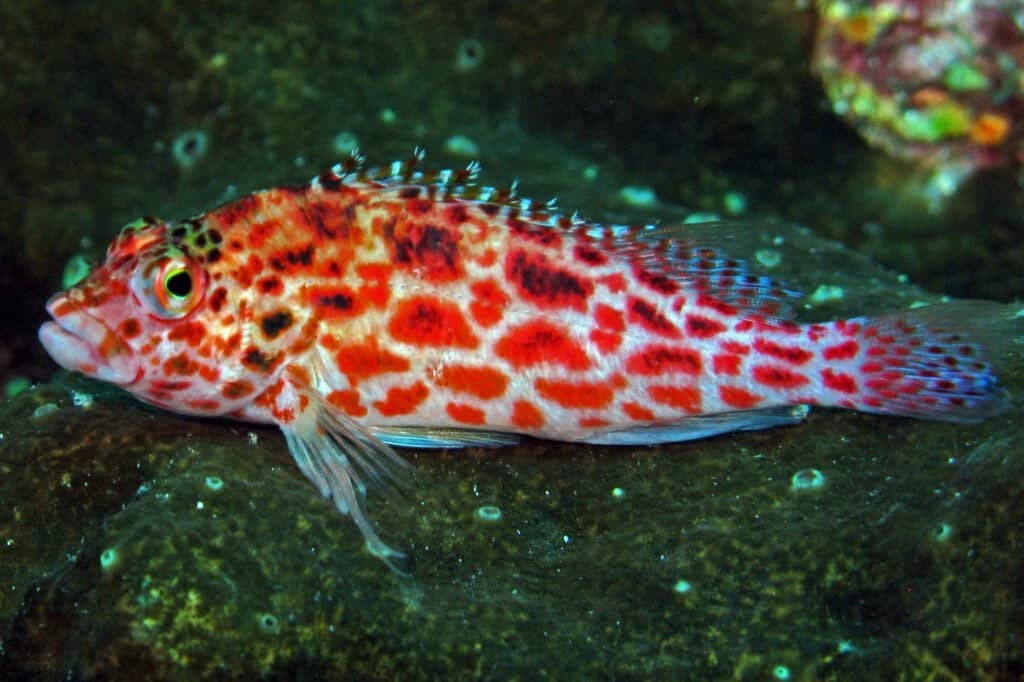
The Queen Hawkfish is a small to medium-sized fish with a tough body and distinctive spiny dorsal fin. It can grow up to 6 inches long and has a mottled red-and-white coloration.
- Region of Habitat: Indo-Pacific region
- Scientific Name: Cirrhitichthys aureus
- Place of Origin: Indo-Pacific
- Feeding Habits: Carnivore, feeding on small fish and invertebrates
- What Sound They Make: Silent
Fun Facts: Queen Hawkfish are known for their perching behavior. They often rest on coral branches or rocks as they survey their surroundings for prey.
They have a unique hunting style. They use their sharp pectoral fins to hold onto the substrate while they ambush unsuspecting prey.
Despite their small size, they are formidable predators in their reef habitats.
30. Queen Scallop
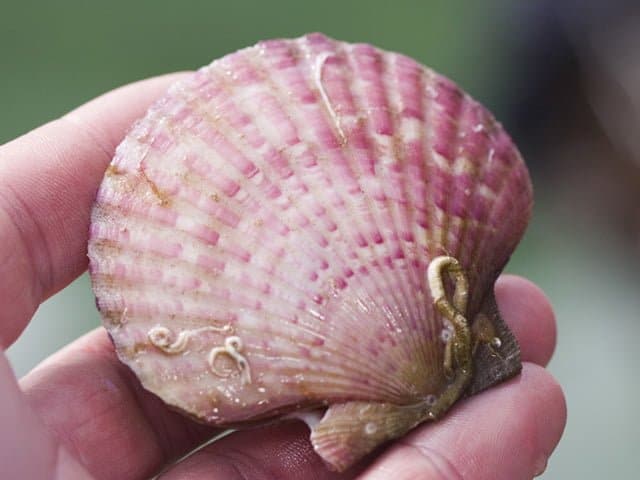
The Queen Scallop is a small to medium-sized bivalve mollusk, typically measuring about 2 to 3 inches in diameter. Its shell is often brightly colored, ranging from yellow to orange to pink.
- Region of Habitat: North Atlantic Ocean
- Scientific Name: Aequipecten opercularis
- Place of Origin: North Atlantic
- Feeding Habits: Filter feeder, feeding on plankton and detritus
- What Sound They Make: Silent
Fun Facts: Queen Scallops are known for their ability to “swim” by rapidly clapping their shells together, which propels them through the water.
They are an important species in commercial fisheries, particularly in Europe, where they are harvested for their delicate, sweet-tasting meat.
Queen Scallops are also a popular subject in marine art due to their beautifully colored shells.
31. Quelea
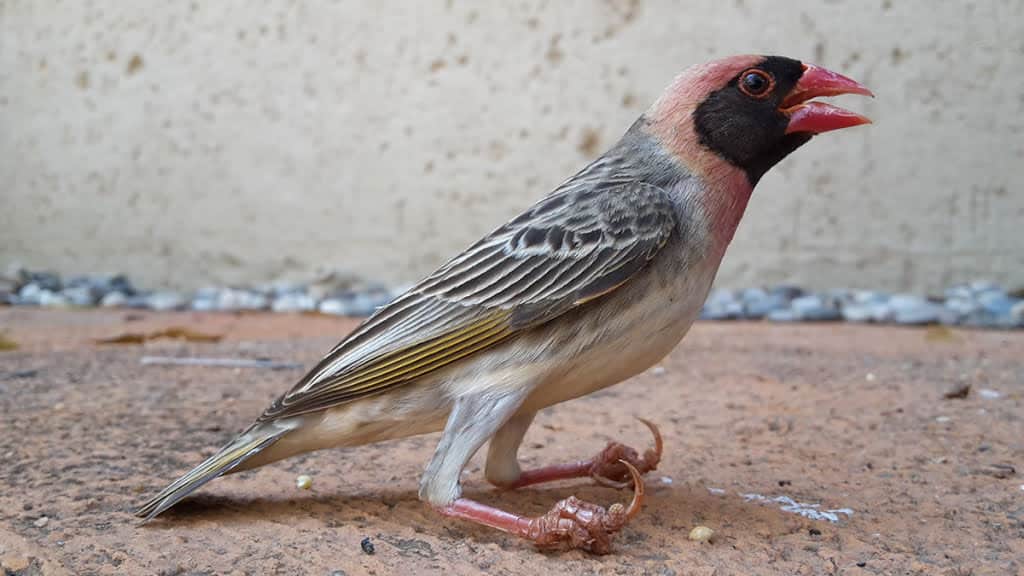
The Quelea is a small, seed-eating bird weighing about 4 to 5 inches in length and weighing about 0.5 to 1 ounce.
Depending on the species, it has a brownish body with a distinctive red or yellow bill.
- Region of Habitat: Sub-Saharan Africa
- Scientific Name: Quelea quelea
- Place of Origin: Africa
- Feeding Habits: Herbivore, feeding primarily on seeds and grains
- What Sound They Make: High-pitched chirping and twittering
Fun Facts: Quelea are often called the “locust birds” due to their massive flock sizes, which can number millions.
These birds are considered one of the most abundant and destructive species in the world, particularly in agricultural areas where they can devastate crops.
Despite their small size, their sheer numbers make them a force to be reckoned with.
32. Quinn’s Wren
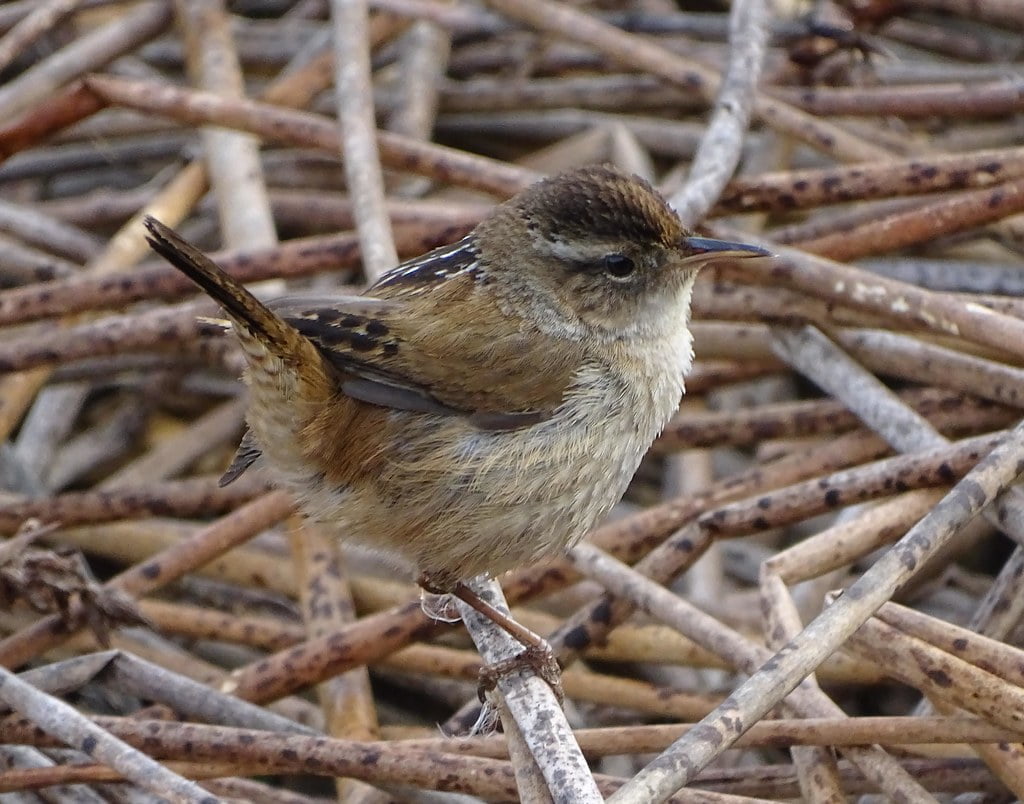
Quinn’s Wren is a rare and mysterious bird species. It has a small, slender body measuring about 4 to 5 inches in length. Its brownish-gray feathers have subtle streaks and a slightly curved bill.
- Region of Habitat: Specific regions in Australia
- Scientific Name: Hylacola quinquinervis
- Place of Origin: Australia
- Feeding Habits: Insectivore, feeding on insects and spiders
- What Sound They Make: Soft, musical trills and whistles
Fun Facts: Quinn’s Wren is named after its founder, who first documented the species in the remote regions of Australia.
This bird is known for its secretive nature. It is often hidden in dense vegetation, making it challenging to observe in the wild.
Due to its rarity, Quinn’s Wren is a prized sighting for birdwatchers and researchers alike.
33. Quokka Frog
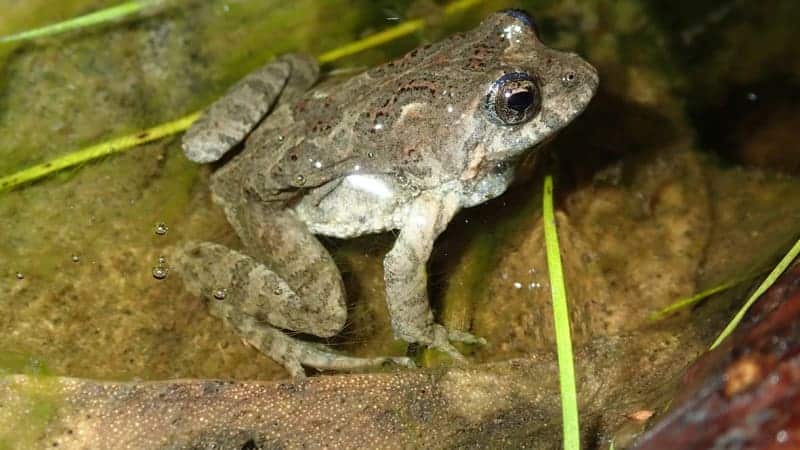
The Quokka Frog is a small, ground-residing frog, typically measuring about 1 to 2 inches long. It has a smooth, brownish body, a lighter underbelly, and large, round eyes.
- Region of Habitat: Southwestern Australia
- Scientific Name: Crinia pseudinsignifera
- Place of Origin: Australia
- Feeding Habits: Insectivore, feeding on small insects and invertebrates
- What Sound They Make: Short, high-pitched calls
Fun Facts: The Quokka Frog is named for its association with the Quokka, as they share a similar habitat in southwestern Australia.
These frogs are highly adaptable and can be found in various environments, from coastal wetlands to forested areas.
They are known for their typical calls, often heard during the breeding season.
Conclusion
As we finish our tour of animals, which starts with Q, we’ve seen the wide range of life on Earth. Each animal, from the friendly quokka to the bright quetzal, has a special place in nature.
We’ve found Q-named animals in many homes, from Australia’s forests to Central America’s misty mountain woods. Some, like the quagga, teach us why taking care of nature is important.
By learning about these animals, we can understand more about our world and why we need to care for it.
We hope this guide has increased your interest in these special creatures, whether you love animals or are just curious.
The next time you hear about an animal that starts with Q, consider its role in nature. How can you help keep these animals’ homes safe?

